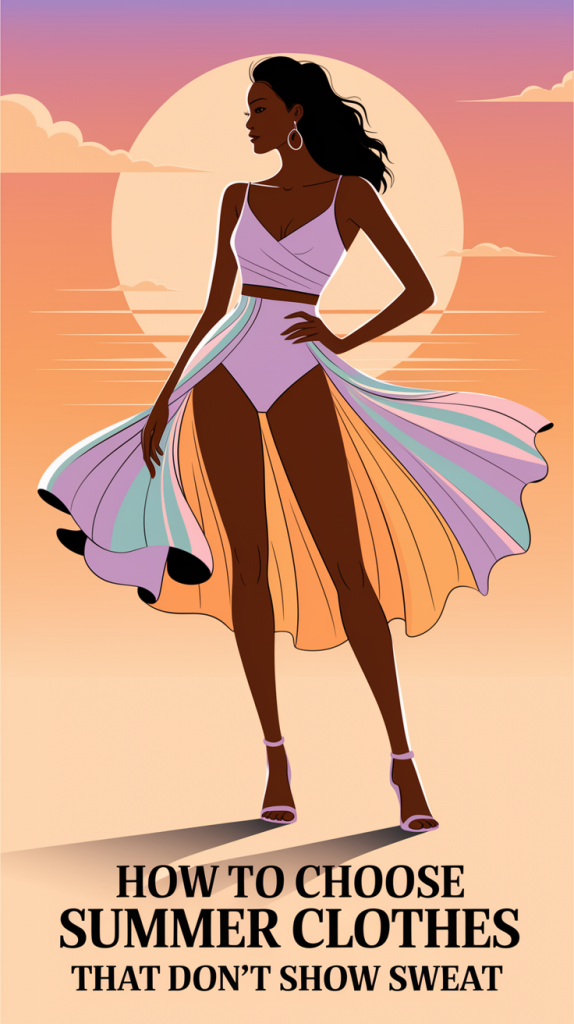How to Choose Summer Clothes That Don’t Show Sweat in 2025
Nobody wants to attend a meeting or date with noticeable sweat marks on their arms or backs. It feels nearly impossible to avoid during the summer heat, and with changing climate patterns across the U.S., summers are projected to be longer, hotter, and more humid than ever before. The forecast for summers in 2025 isn’t looking any better.
That means one thing. To remain stylish and confident during summer, it’s time to strategize about your wardrobe. The question ‘how to choose summer clothes that don’t show sweat’ is no longer limited to a fashion statement; it’s a way of life. From light fabrics to moisture-wicking technology and the right cuts, we cover everything you need to know.
Who is this article for? Anyone living in southern states like Texas and Florida, or Arizona. Even New Yorkers are experiencing the sweltering July heat. The office workers, students, vent-goers, and anyone who just wants to look fresh and feel confident without the worry of showing visible sweat marks.
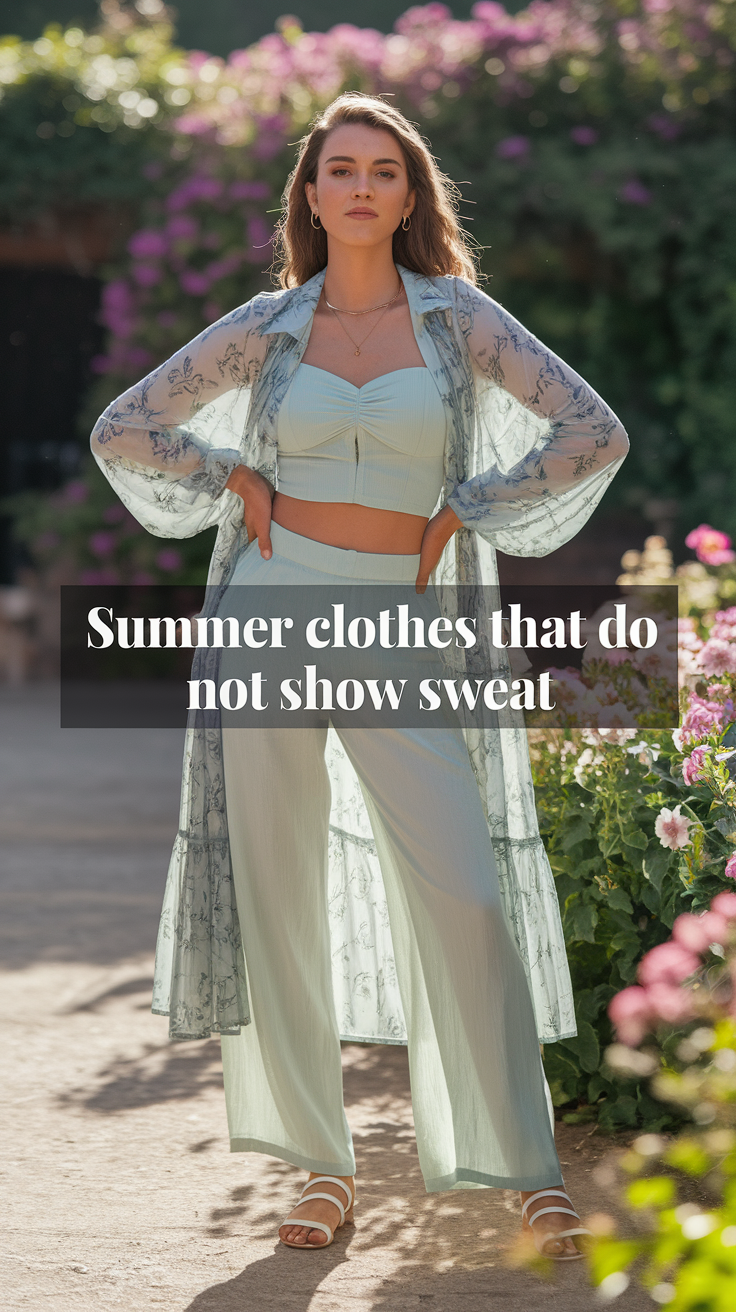
Why Sweat Shows on Clothes-and Why It Matters in 2025
In case you thought sweat marks were just a personal concern, there is science behind why they pop out so clearly on certain clothes. When the body overheats, it has to cool down, which it does through sweating (perspiration). But what happens if that sweat is trapped in the clothes?
Specific types of fabric soak up and darken where sweat hits them, creating marks, especially under arms, across the back, and around the chest. Add to that blends with close-fitting cuts, lack of airflow, and poor color choices, and you have a perfect combination to increase your embarrassment.
Here’s the salient point: NOAA has predicted 2025 to be one of the hottest years/is expected to be recorded. Parts of USA summer temperatures are expected to rise by 1.5-2 degrees Fahrenheit (as compared to last decade averages). More heat leads to more sweating, which definitely implies that we need to rethink our wardrobe selections.
Best Materials That Hide Sweat and Keep You Cool
Natural Fabrics: Pros and Cons
- Cotton: Soft and breathable, but absorbs moisture.
- Linen: Promotes dry airflow but is prone to creasing and wet marks.
- Bamboo: Has innate antibacterial properties and removes moisture—ideal for delicate skin.
Natural fabrics feel wonderful and breathable. However, fabrics differ when it comes to concealing sweat. Cotton is comfortable but absorbs moisture. While linen is better for air circulation, it requires layers or patterns to conceal stains.
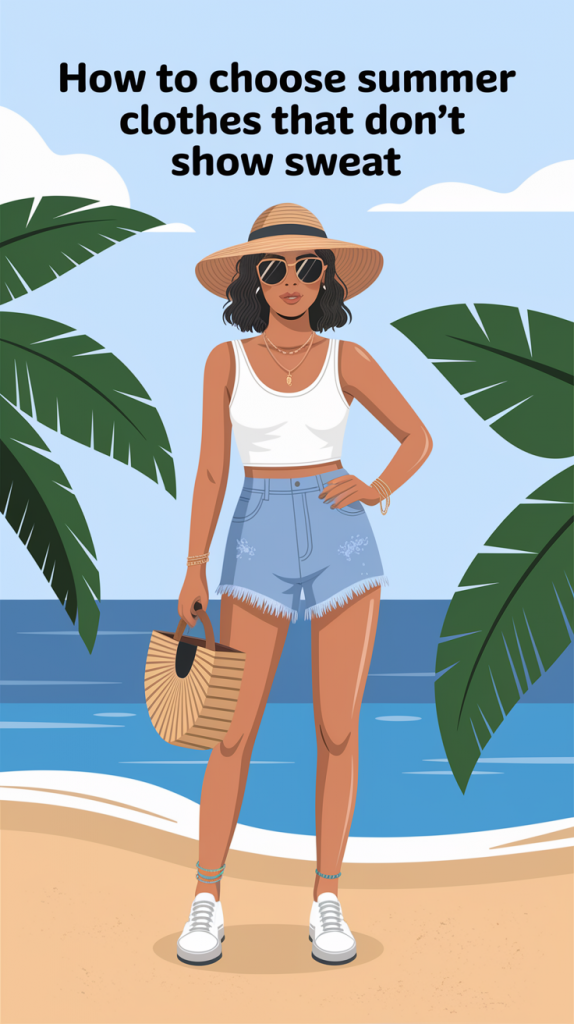
Synthetic Tech Fabrics
New technology addresses emerging problems, with moisture-wicking synthetic fabrics emerging as the most effective solution:
- Polyester blends: These are frequently found in activewear as they pull moisture away from the skin.
- Tencel™ (Lyocell): This sustainable, silky fabric is soft, eco-friendly, and odor resistant.
- Nylon with CoolMax®: A go-to choice for performance and when spending long days in the sun.
While these fabrics can be found on performance wear, there’s no need to worry; they have now made their way into trendy everyday clothing too.
Quick Comparison Table: Fabric Performance
| Fabric Type | Breathability | Sweat Visibility | Comfort | Wrinkle-Resistant |
|---|---|---|---|---|
| Cotton | High | Moderate | High | Moderate |
| Linen | Very High | High | High | Low |
| Bamboo | High | Low | High | High |
| Tencel™ | High | Low | High | High |
| Polyester | Moderate | Low | Moderate | High |
Cuts and Silhouettes That Work With Your Body—Not Against It
Looser Fits Are Your Summer BFF
Sweating in tight clothes is inevitable as they trap heat. Unlike tighter clothing, looser ones allow ventilation and air to flow freely away from sweaty areas. Oversized tees, wide-leg pants, A-line dresses, and relaxed-fit button-downs are some examples of clothing that can be flattering and functional at the same time.
Arm Coverage Without the Traps
Snug short sleeves around the armpit can constrict, causing dark perspiration rings to form. Look for:
- Muscle tank cuts
- Cap sleeves
- Drop shoulders
- Dolman sleeves
All of these provide the customary level of coverage with the maximum amount of open space around the arm for proper ventilation.
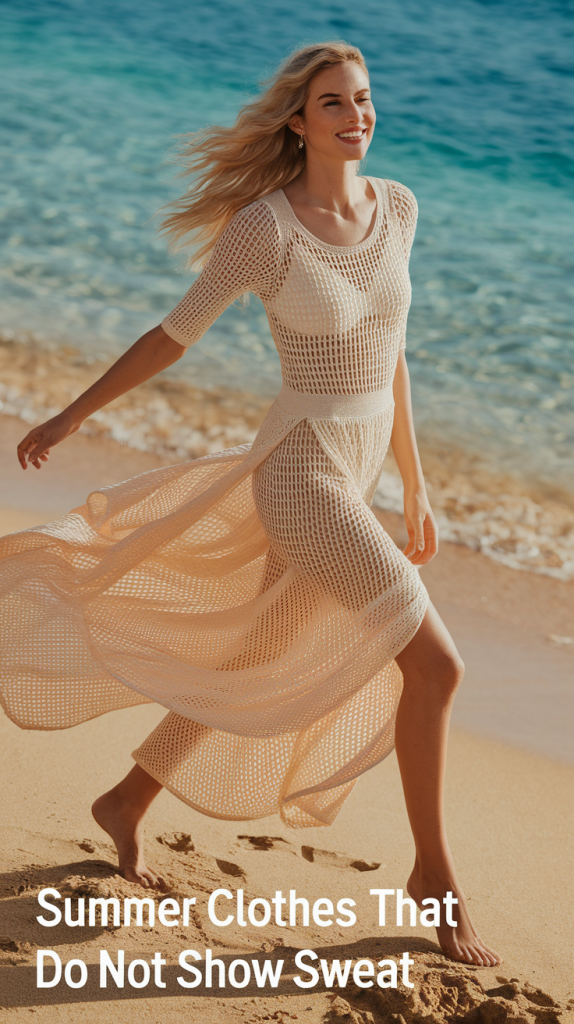
Fabric Panels in High-Sweat Areas
Advantages As strategies evolve over time, style brands are getting smarter. Some collections for 2025 include additional fabric layers or moisture-wicking mesh incorporated into the underarm area. It’s discreet, yet remarkably efficient.
The Best Colors and Prints to Disguise Sweat Marks
Sweat-Hiding Color Picks
Certain colors are disastrous when it comes to perspiration, such as light gray. Others save you during scorching heat:
- Black: This color always hides wet marks but gets hot under direct sunlight.
- Navy blue: An excellent alternative since it does not overheat.
- Charcoal and dark brown: Functional and versatile.
- Prints and textures: Mask wet spots and distract the eye.
Colors to Avoid
- Light gray (captivating, but stain-prone)
- Pastel blue or mint (risking beauty can be a double-edged sword)
- Brightly solid hues (show dark patches faster)
How About White?
Here’s a surprise: white can actually be one of the safest choices. Since it doesn’t darken with moisture, it won’t show sweat as easily-especially if you layer it.
Brands and Stores That Make Sweat-Hiding Clothes in 2025
Best High-Tech & Fashion-Forward Brands
- Lululemon: Fashionable activewear with breathable fabrics and sweat-wicking technology.
- Columbia: Lightweight outdoor shirts enhanced with Omni-Wick™ technology.
- Uniqlo: AIRism collection with cooling and anti-odor features.
- Ministry of Supply: Office clothing integrated with performance technology.
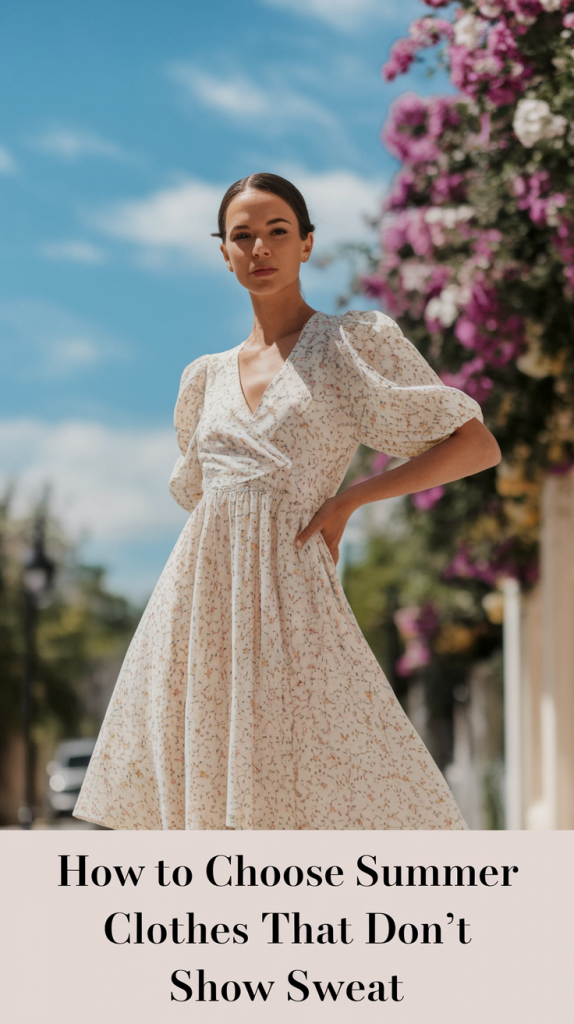
Budget-Friendly Finds
- Old Navy – Leisure wear and fundamental t-shirts made from moisture-wicking fabric blends.
- Target’s “All in Motion” collection offers sweat-wicking materials.
- Amazon Essentials – Bundles of ventilated t-shirts with reviews to influence your decision.
| Brand | Price Range | Fabric Tech | Best For |
|---|---|---|---|
| Lululemon | $$$ | Silverescent™, Everlux | Fitness + daily wear |
| Columbia | $$ | Omni-Wick™, Omni-Freeze | Hiking, travel |
| Uniqlo AIRism | $ | Cooling + odor block | Layering, city heat |
| Old Navy Active | $ | Quick-dry poly blends | Budget, casual looks |
| Ministry of Supply | $$$ | AeroZero™, Dry Days | Workwear in humid zones |
Smart Styling Tips to Avoid Visible Sweat
Build Outfits Strategically
- Layer with light outerwear-consider duster coats, drop sleeve kimonos, or even stylish open button-ups.
- Select breathable bottoms: Steer clear of fitted denim-choose skirts or loose-fitting, flowing linen pants.
- Use underarm pads: Highly recommended for professional work settings or formal events.
Summer-Ready Accessories
- Wide-brimmed hats: Block out the sun while looking stylish at the beach.
- Scarves or neckerchiefs: Soak up perspiration without attracting attention.
- Tote bags: For handy storage of spare tops or deodorant wipes.
Extra Hacks: It’s Not Just About the Clothes
Occasionally, even the best wardrobe choices require extra assistance. This is where options for products come in.
Try These Intelligent Add-Ons:
- Clinical-grade antiperspirants (Certain Dri®, Dove Clinical, etc.)
- Disposable underarm absorbent pads (Carpe, SweatBlock)
- Cooling wipes and mists for body spray
- Powders meant for reducing the risk of chafing
And here’s a professional tip: for long-lasting results, apply antiperspirant at night for better absorption.
Summary: Sweat-Proof Summer Dressing in 2025
Learn these few points:
- Select clothes made of blended fabrics that are comfortable, breathable, and moisture-wicking.
- Cut and fit determine how airflow moves through the fabric-loose is better than tight.
- Bright solids tend to show sweat more than dark colors and patterns, which conceal sweat more effectively.
- Modern brands combine style and practicality all at once.
- Products designed to limit sweat and anti-sweat accessories shouldn’t be overlooked.
Frequently Asked Questions
Q: Is cotton always a bad choice in the heat?
Not at all. Choose lightweight cotton that is loose-weaved and avoid layering it with thick fabrics underneath.
Q: Can I wear black in the summer?
Sure, but be strategic. While black does a great job hiding sweat, it absorbs heat too. So, wear black in light, breezy cuts or during the evening.
Q: What’s better-natural or synthetic materials?
Both have their place. When it comes to performance and sweat control, modern synthetics have the advantage. But, for casual outings, blends of bamboo or linen are wonderful.
Q: Do sweat-proof undershirts really work?
They can! Stores like Thompson Tee or Ejis sell undershirts with built-in sweat guards designed for extreme situations.
So, what is your summertime sweat strategy?
Have you found the perfect anti-sweat outfit yet? Did you try any of the mentioned brands or fabrics? Feel free to share your tips, favorites, or even funny wardrobe fails.
Leave your thoughts in the comments, and do not forget to share this with your friends trying to survive the summer heat.
